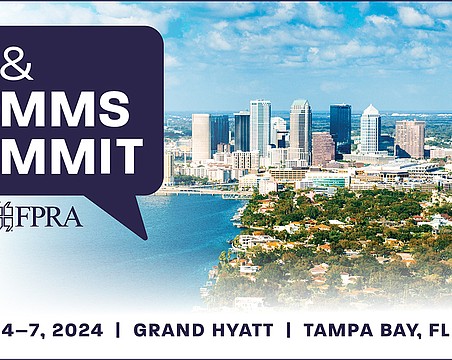Retainer Doctors
health care trend by Dave Szymanski | Tampa Bay Editor
Doctors like Jon Hemstreet of St. Petersburg are becoming entrepreneurs, offering patients a more accessible, attentive kind of medical care.
St. Petersburg general practitioner Dr. Jon Hemstreet worked in a large Tampa clinic for four years with other doctors. He spent about 15 minutes, or less, with each patient. He collected a meager insurance reimbursement.
Things have changed. Today, Hemstreet, 37, spends as much time as needed with his patients. That's because he has turned entrepreneur, adopting a different medical business model: Concierge or boutique medicine.
Other physicians use the terms "preventative," "retainer" or "highly attentive" medicine.
It is not new, having started near Seattle in 1996. But it is growing in Florida and nationally among patients and doctors disgruntled with the quality of primary health care. Individual doctors as well as companies are involved in this business model.
In retainer medicine, patients pay an annual membership or access fee for a personal physician who's always available. The patients can come to the doctor, or the physician can come to them, at their home or office.
After working for the clinic, Hemstreet started investigating different practice models. Doctors in Seattle and Palm Beach and Tampa started to establish retainer practices. So Hemstreet started one in St. Petersburg, at 545 4th Ave. S., near Bayfront Hospital, last year.
His patients pay him $500 to $1,500 a year, based on age. He carries 50 patients who reach him by cell phone and email. He is hoping to build that to about 100 to 150 patients in the next two years.
"I have a lot of business men and women," Hemstreet says. "They have no time to wait at a doctor's office for an hour to get in. This model is a more patient-centered way of providing care."
Hemstreet says it takes a practice about three years to establish solvency, but he's encouraged by the response he and other preventative care doctors have received.
"This is a new economic model for medicine," says Hemstreet, a North Carolina native. "There are a lot of exciting things going on, such as anti-aging, which people have a lot of interest in. It's really an evolving business model."
An evolving market
The changing nature of medicine, in which most doctors are reimbursed by health insurance organizations and are seeing their income decline, has led to less general practitioner-primary care doctors. More medical students are going into specialties.
Under the evolving retainer model, primary care doctors like the ability to spend more time with their patients, answering their questions.
"It is really about time and access," Hemstreet says.
Hemstreet is happy he took the plunge into starting his own business, but needs a team of consultants to help when needed.
"Doctors are notoriously bad businessmen," he says. "But I have people I can consult with. The very best way to learn something is to do it."
Doing retainer medicine is more fulfilling, Hemstreet says.
"The satisfaction you get as a physician, the way you envision it, it is professionally rewarding to do this," he says.
Retainer medicine also makes for long days, but not longer than hours in a clinic. "I find it less taxing then running from room to room every 10 minutes," Hemstreet says.
In northern Pinellas County, in Palm Harbor, Dr. Michael O'Neal was the trailblazer for retainer medicine on the Gulf Coast when he opened a boutique practice there in 2002 and then a practice on Tampa's Harbor Island.
O'Neal, 39, the physician for professional baseball's Toronto Blue Jays, counts many professional athletes, former athletes and executives among his patients. His retainer is $1,500 to $3,500 a year.
O'Neal was a true trailblazer, starting his retainer practice straight from his residency in Tampa at the University of South Florida. He started with no money and no patients.
Will his income be better than if he worked in a traditional clinic?
"It will be, once I reach a growth point," O'Neal says. "But I didn't do it for the money. I did it so I could provide patients with a higher level of service and care. I have very high expectations of myself."
O'Neal has collected practice data for six years. He now spends an average of 35 minutes with each patient. But if he has to spend 90 minutes, he will. He has 400 patients and will cap it off at 450. The average family physician has more than 2,000.
"I know of three physicians in Pinellas that have 20,000 patients," O'Neal says. "Can you imagine being one of the thousands of patients? I refer to that as diluted health care."
Like other retainer practices, O'Neal's business evolves to the needs of the patients.
"The reason people seek out boutique care is that they are disenchanted with the traditional health care model that's evolved over the last two decades," he says. "A lot of people want access. Others want relationships with physicians. It's valuable for people. It's difficult for someone to have that with every one of their 3,000 patients."
O'Neal wants to grow his clinics from the Bay area, through the Southeast and eventually take them national.
"I was willing to sacrifice to make this happen," he says. "It's important to show the young physicians that it's okay to challenge the system, as long as it's in an ethical and legal way."
O'Neal has even lobbied for the rights of retainer medicine in Washington, D.C. In the late 1990s, a handful of politicians thought boutique medicine would be a threat to Medicaid and wanted to restrict the practice. Their efforts failed.
Today, less than 1% of all primary care doctors, or less than 500 nationally, have retainer practices. The growth rate is expanding, but very slowly.
"I agree with the AMA, that this could be an important component of a pluralistic health care system," O'Neal says.
The first practice
The beginnings of retainer medicine started with a company called MD2 (squared) in 1996 in Bellevue, Wash.
Dr. Howard Moran was the team physician for professional basketball's Seattle Supersonics. After working with the athletes each season, he wondered why others couldn't get the same level of care.
So Moran developed a new model: Two physicians per office with 100 patients per physician. The fees: $25,000 for family of four and $15,000 for an individual.
Today, MD2 has offices in Portland, Ore.; San Francisco; Bellevue; and Seattle and will be opening one in Chicago in the summer. It is also looking at expanding into the Northeast, Florida and other major markets.
Some of the MD2 primary care physicians have even scrubbed up when some of their patients have entered surgery to make sure surgeons understood their patient's condition.
"No one will tell you there aren't issues in health care industry," says Peter Hoedemaker, CEO of MD2. "We all talk about ways to stay healthy. Having more time with physicians is important. But most physicians take care of 3,000 patients and spend seven minutes with each one."
Hoedemaker says the toughest part for some people to grasp is understanding the demographic that likes retainer medicine. Its clients include highly traveled executives who are very mobile and taken care of in many aspects of their lives, by attorneys and accountants, in everything but medical care.
"So they want medical care on their time, with a lot confidentiality and privacy," Hoedemaker says.
The other audience MD2 serves, for a monthly management fee, are its doctors, who are sometimes burning out before they enter retainer medicine.
"They didn't want to be on that treadmill," Hoedemaker says. "They wanted to provide great care. They earn their living, working 12 to 14 hours a day. Then they have to make phone calls. But they're trying to get home to their families, so they make two out of 10 calls. They don't feel very good about that. It's not rewarding."
Another retainer model, MD VIP, began in Boca Raton, formed by a group of physicians there in 2002.
The MD VIP fee, $1,500, is closer to what Bay area doctors are charging.
Like MD2, MD VIP is in a number of cities. It is affiliated with 225 doctors in 22 states, including some on the Gulf Coast.
Doctors see themselves as lifestyle coaches and coordinators of specialty care. They call specialists and follow up. The patient visits are unhurried. There's no waiting at the doctor's office. The model is built on the idea that prevention is better care. More time with doctors equals better care.
MD VIP patients also get a personalized health care Web site, where their doctors post tutorials for them to do and read to improve their lifestyles and health.
REVIEW SUMMARY
Company: Hometown MD
Industry: Health care
Key: Offer personal care to a limited number of patients in the Tampa Bay area.





